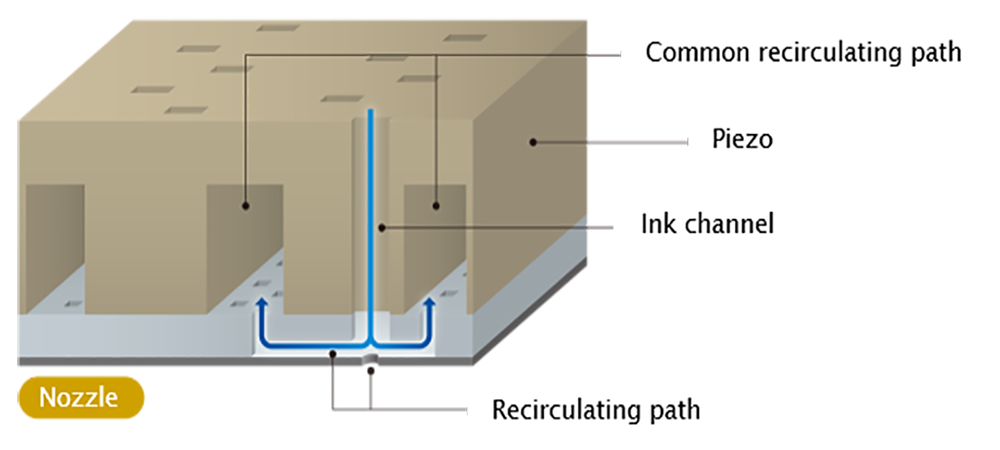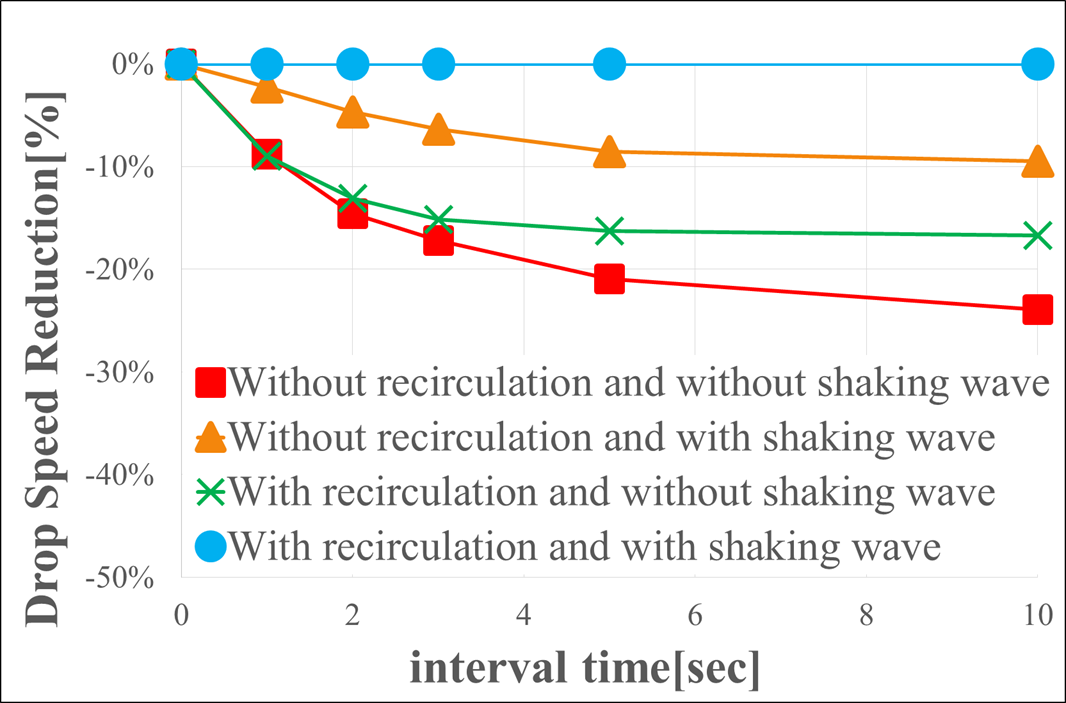Nozzle recirculation technology
Contributing to higher productivity and quality in industrial fields by improving the recirculation and jetting performance

Adaptable to large-particle inks and drying inks, explore new applications of inkjet printers.
Inkjet printheads used in industrial fields are required to ensure not only high image quality but also high productivity and compatibility with a wide variety of inks. For example, an ink in which functional particles are dispersed needs to be free of particle sedimentation and ejectable in a stable manner for a long time. Konica Minolta’s recirculation technology is suitable for preventing the sedimentation of large particles. Furthermore, even if bubbles are trapped in the ink, this recirculation technology is capable of releasing bubbles only in the recirculating path without discharging the ink through the nozzles, thus suppressing the consumption of ink during maintenance.
Technology Overview
The recirculating head is designed to keep the ink discharged from the recirculating path, which communicates with the ink channel, and thereby refresh the ink in the ink channel and in the nozzle, suppressing ejection failures due to particle sedimentation or ink drying or bubbles inside the nozzle. General nozzle recirculating heads have a structure with a recirculating path only on one side, which causes the problem of ink retention on the opposite side and prevents bubbles from being released. Konica Minolta has realized a design free of ink retention that can thoroughly release bubbles by providing a recirculating path at both ends of the ink channel.
Compatibility with drying inks

Anti-drying property of water-based inks
Since a water-based ink is highly likely to become dry, it causes decapping, which is the phenomenon by which the moisture of the ink evaporates from the meniscus surface inside the nozzle into the air in the non-ejected state; this causes the viscosity of the ink inside the nozzle to increase and the ink drop speed during jetting to decrease accordingly, resulting in ejection failures. Decapping can be suppressed by combining this nozzle recirculation technology with a technology called a shaking waveform, which applies microvibrations to the meniscus inside the nozzle. In a decapping evaluation using a water-based ink with a high drying property in the standby state without ejection for one to ten seconds, the ink drop speed decreased by 24% without nozzle recirculation and without a shaking wave in the standby state without ejection for ten seconds, whereas with ink recirculation and with a shaking wave, the evaluation result showed that the ink drop speed did not decrease.
Self-recovery from ejection failure due to bubbles
Self-recovery from ejection failure
Inkjet technology must solve the issue of maintaining a good ejected state in a stable manner for a long time; in case of an ejection failure due to, for example, the trapping of bubbles, maintenance requiring the printer to be inactive for a long time was unavoidable. However, the nozzle recirculation function makes it possible to release bubbles without maintenance. We confirmed that all nozzles ejected the ink in the same manner as the initial state when ink supply to the ejecting heads was suspended, bubbles were introduced from the nozzles by a meniscus break, and then ink supply was resumed.




